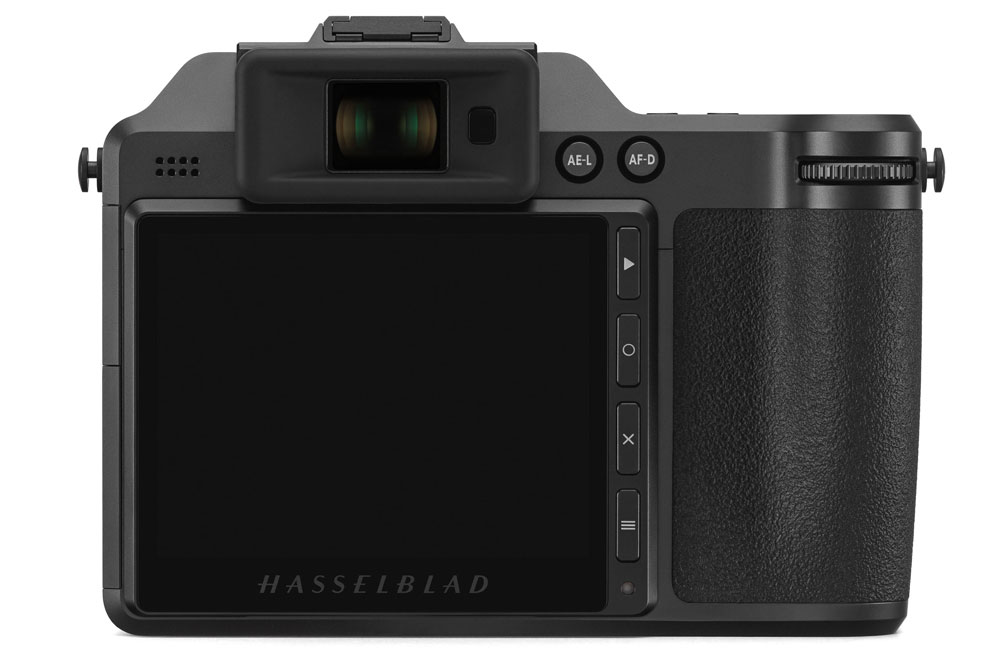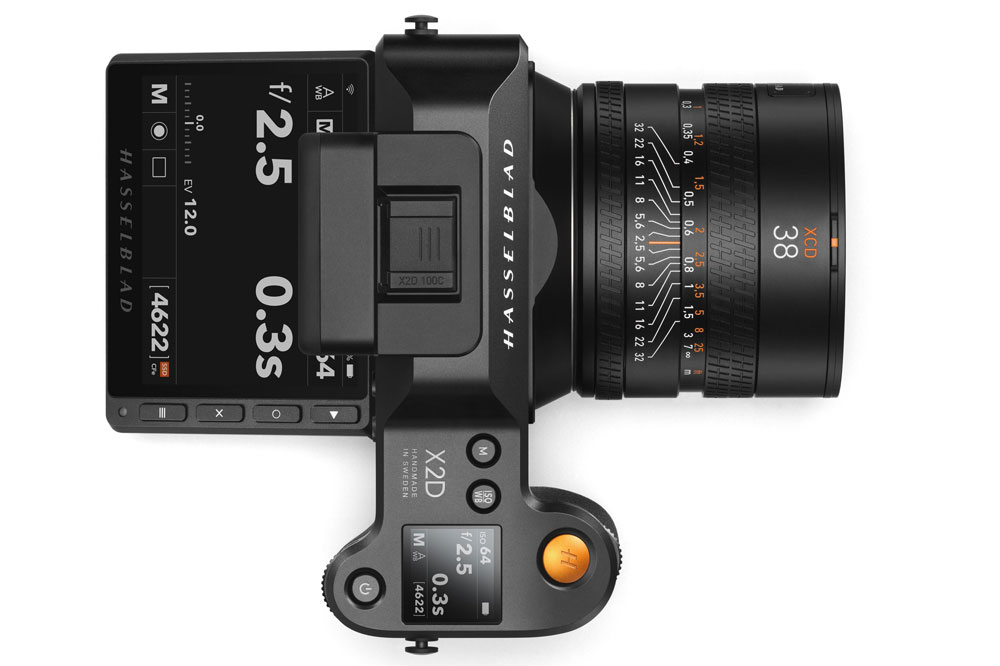Hasselblad has introduced a new 100-megapixel medium format mirrorless camera, in the shape of the Hasselblad X2D 100C. While superficially similar-looking to the existing 50MP Hasselblad X1D II 50C, the new model gains several significant updates, including a larger viewfinder, tilting rear screen, and the incorporation of 5-axis in-body image stabilisation (IBIS). The firm says it brings “substantial technological enhancements to image quality, camera handling, and system responsiveness”.

The Hasselblad X2D 100C fitted with the new XCD 90mm F2.5 lens. Image credit: Hasselblad
The Hasselblad X2D 100C is built around a backside illuminated 100MP sensor measuring 44 x 33mm, which incorporates phase detection pixels for rapid autofocus. This is presumably the same chip as used by the X2D’s closest competitor, the Fujifilm GFX100S.
Key specs include a sensitivity range of ISO 64-25,600; 16-bit raw output promising up to 15 stops of dynamic range; 294-point autofocus; and 3.3 frames per second continuous shooting. The IBIS system, developed in-house by Hasselblad, promises 7 stops of shake reduction.
Stills photography purists will be delighted to hear that the camera doesn’t offer video recording, and the company has no plans to add the capability by a future firmware update, either.

Hasselblad X2D 100C back view. Image credit: Hasselblad
For viewing, there’s a 5.76m-dot OLED viewfinder with a massive 1.0x magnification, which makes it the largest EVF we’ve yet seen. It’s joined by 3.6in rear touchscreen that now tilts up and down. There’s also a top-plate status panel that shows the main exposure settings at a glance.
Files are recorded to either a 1TB internal SSD, or a CFexpress Type B card. Wi-Fi is built in for connection to iOS devices, allowing remote control and image editing via the Phocus Mobile app. Unfortunately, Android users are out of luck.

Hasselblad X2D 100C top view with XCD 38mm F2.5 lens, showing the onscreen interface. Image credit: Hasselblad
Hasselblad claims the X2D 100C is the smallest and lightest camera in its class. This is true, but not by much. At 895g it’s just 5g lighter than the Fujifilm GFX100S, while its 148.5 x 106 x 74.5mm dimensions make it 12mm slimmer front-to-back.
In terms of control layout, it’s very similar to its predecessor, with the biggest difference being that the older model’s top-plate mode dial has been replaced by a button to make space for the new status screen.

Hasselblad X2D 100C with XCD 90mm F2.5 in-hand. Image credit: Hasselblad
The Hasselblad X2D 100C is available to order immediately for £7,369 body-only (€8,699 / $8,199).
Three new Hasselblad XCD f/2.5 lenses
Alongside the X2D 100C, the firm has also introduced three new lenses, the Hasselblad XCD 2.5/38V, Hasselblad XCD 2.5/55V, and Hasselblad XCD 2.9/90V. Sharing the same f/2.5 maximum aperture, these three optics bring a new, more practical design compared to the firm’s very minimalist existing lenses.

Hasselblad XCD 38mm F2.5, 90mm F2.5, and 55mm F2.5 lenses.
Each boasts a user-customisable lens control ring, along with a focus ring that can be snapped forwards for manual focus, complete with distance and depth-of-field scales. All three employ a stepping motor for fast, silent autofocus. Like all XCD lenses, they also include a built-in leaf shutter.
The 38mm f/2.5 gives a 30mm equivalent moderate wideangle view, the 55mm f/2.5 is a classic standard lens with a 44mm equivalent view, while the 90mm f/2.5 is a short telephoto at 72mm equivalent. The 38mm and 55mm are both set to cost £3,599 (€4199 / $3,699), while the 90mm will be £4,059 (€4,799 / $4,299).
Follow AP on Facebook, Twitter, Instagram, and YouTube.






